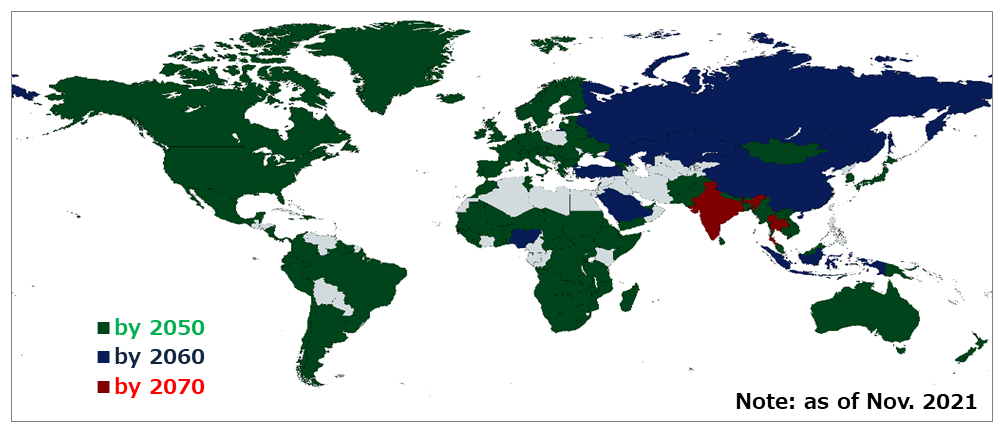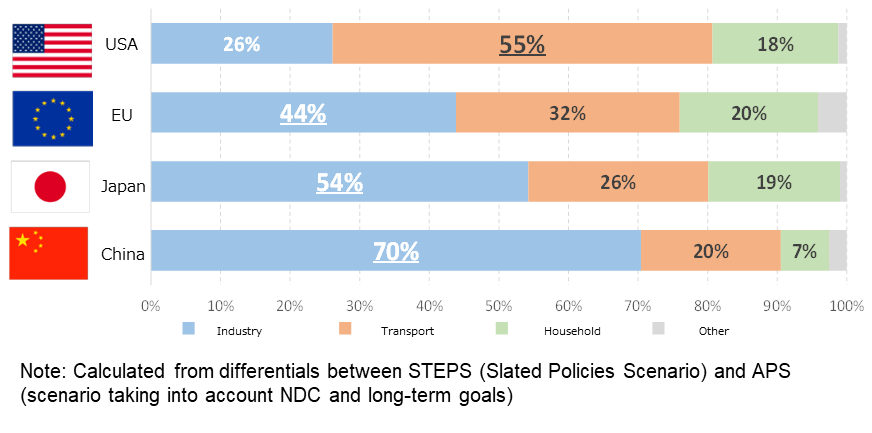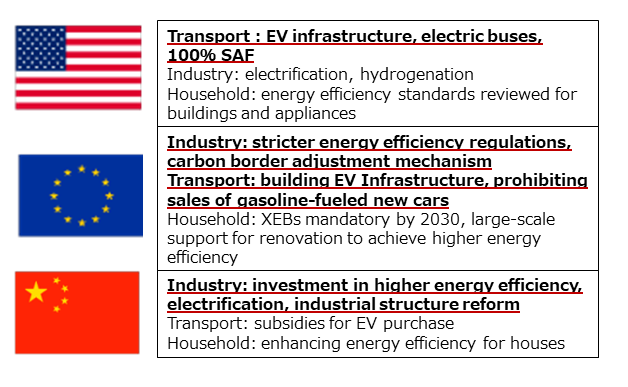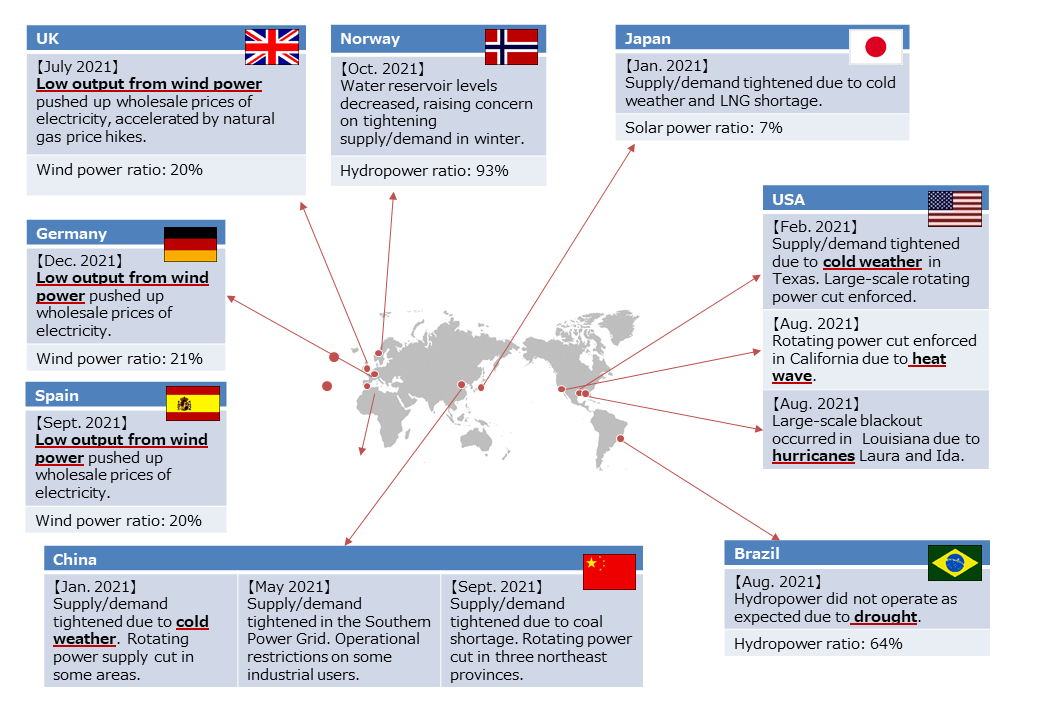“Energy White Paper 2022”
Here’s what you need to know about the energy situation in Japan.
(in provisional translation)
(English ver.) 2022-09-15

The Ministry of Economy, Trade and Industry submits an annual report to the Diet, which summarizes the measures taken in relation to energy supply and demand. The Annual Report on Energy (also known as the “Energy White Paper”) describes energy trends at home and abroad, efforts made by Japan and its policy principles based on those trends as well as its future policy directions. It is a must-read document for anyone who wants to learn about the current energy situation. This article highlights the essential parts of the latest “Energy White Paper 2022” that was published on June 7, 2022.
Status of Japan’s energy policy in 2022
The Energy White Paper summarizes the current energy situation and measures taken in the relevant year. It consists of the following three parts:
(1) Analysis based on the latest trends in the relevant year
(2) Energy data at home and abroad
(3) Measures taken
The first part shows the characteristics of the relevant year, and last year’s paper (Energy White Paper 2021) focused on the progress in the reconstruction of Fukushima, efforts to address challenges toward achieving carbon neutrality by 2050, and structural changes in energy security such as securing resources, climate change countermeasures and devastating natural disasters.
The latest “Energy White Paper 2022”, following the last year’s paper, focuses on the reconstruction of Fukushima and efforts to address challenges toward achieving carbon neutrality by 2050. It also analyzes the growing uncertainties in the energy situation caused by global trends such as the COVID-19 pandemic and Russia’s aggression against Ukraine, showing how the government is responding to such uncertainties.
Main topics of the Energy White Paper 2022
Here are key takeaways from the Energy White Paper 2022
1) Progress in the reconstruction of Fukushima
Eleven years have passed since the Great East Japan Earthquake and the resulting accident at TEPCO’s Fukushima Daiichi Nuclear Power Station that occurred in 2011. The decommissioning of the NPS and reconstruction of Fukushima are the most critical challenges facing the Ministry of Economy, Trade and Industry. We have been advancing steady efforts toward those goals.
Regarding the decommissioning of the NPS, thanks to the measures taken thus far, the amount of contaminated water generation has reduced to as low as one quarter of the levels before those measures were taken. Fuel removal from the spent fuel pool has been completed in Units 3 and 4 with preparations underway aiming at completion in all the units by 2031. Furthermore, toward the retrieval of fuel debris (melted and solidified fuel) on an experimental basis, a full-scale test of the robot arm has started contributing to steady progress in decommissioning work. The accident-stricken reactors have been maintained in a cold shutdown condition with radiation levels within the site decreasing substantially.
The policy has been announced that the disposal of ALPS treated water* will start approximately 2 years after April 2021, when the basic principle was determined. The disposal will be undertaken by release into the sea in strict compliance with the regulatory standards, while measures are to be taken against potential reputational damage from unsubstantiated rumors. We will continue our efforts to build a framework that will prevent such reputational damage and allow people to continue and expand their businesses with peace of mind. In doing so, we will make all-out efforts to make necessary measures in place for ensuring safety and gaining the people’s understanding.
*ALPS treated water is water which has been purified with all radioactive substances removed except for tritium, which is extremely difficult to remove. However, it will satisfy the safety standards if diluted with sea water.
On the other hand, regarding the reconstruction of Fukushima, evacuation orders have been lifted on all the areas except for the Restricted Area. According to the plans made by the municipalities within the Restricted Area, efforts are being made toward lifting evacuation orders in the “Specified Reconstruction and Revitalization Base Areas” around the spring of 2023, and maintenance work is underway which will allow the original residents to re-inhabit the areas. We will also make efforts to lift evacuation orders in areas other than the “Specified Reconstruction and Revitalization Base Areas” so that the original residents with intention to return can do so throughout the 2020s.
In addition to the lifting of evacuation orders, toward the full-scale reconstruction of Fukushima, efforts are being made to revitalize disaster-stricken businesses and people’s livelihoods and create new industries under the “Fukushima Innovation Coast Framework”. Exchange of people and migration/settlement are also being promoted.
Regarding the revitalization of businesses and people’s livelihoods, teams jointly organized by the government and private sector have visited around 5,700 businesses individually to provide support for business resumption, management improvement and sales channel development. As a result, 2,700 of those businesses have resumed operation.
Regarding the creation of new industries, base areas are being developed such as the “Fukushima Robot Test Field” and the “Fukushima Hydrogen Energy Research Field (FH2R).” Efforts are also being made to attract businesses and support them for commercialization of technologies. As a result, steady progress toward reconstruction have been seen with 397 corporate locations established and 4,490 jobs created.
Additionally, in order to further promote development under the “Fukushima Innovation Coast Framework”, we are planning to inaugurate the “Fukushima International Research and Education Organization” in April 2023.
Although the reconstruction of Fukushima is progressing steadily, there are still many challenges from the medium- to long-term perspective. The government is committed to remaining at the forefront in addressing those challenges.
2) Efforts to address challenges toward achieving carbon neutrality by 2050
“Carbon Neutrality,” or aiming to achieve net zero greenhouse gas emissions, has become a worldwide trend. There is an increasing number of countries year by year which declare their intention to achieve carbon neutrality by a specific year such as 2050. The figure came to 154 countries and 1 area when COP26 (the 26th United Nations Climate Change Conference) concluded in November 2021. Carbon Neutrality responses are now in a new stage where we must develop and implement plans for achieving the goals.
Countries that have declared their intention to achieve carbon neutrality

Under these circumstances, rulemaking is progressing steadily. In terms of finance, listed companies are being requested to make efforts toward climate-related financial disclosure based on the TCFD recommendations. (TCFD: Task Force on Climate-related Financial Disclosure)
In terms of policymaking, a number of countries are starting to provide concrete support for efforts toward realizing decarbonized energy structure, such as electrification, decarbonized power generation, hydrogenation and CCUS (Carbon dioxide Capture and Storage.)
However, different approaches are being taken by those countries because the energy situation differs from country to country. Japan and China are strengthening regulations on CO2 emissions from the industry sector, while Europe and the US are tightening policy measures on energy use in the household sector and transport sector respectively. It is necessary to take a realistic approach based on the energy structure and energy situation in each country.
Additional CO2 emission reduction ratio by sector (non-power sector) required for each country to achieve their 2050 goals

(Source) Created by METI based on the “World Energy Outlook 2021” published by the IEA
Policy measures of each country toward achieving 2050 targets

In December 2020, Japan unveiled the “Green Growth Strategy toward Carbon Neutrality by 2050”, under which efforts are in progress in each sector toward decarbonization.
3) Responses to uncertainties surrounding energy
Uncertainties are growing surrounding the world energy situation. The most critical issue among them is surging energy prices. You may remember critical supply and demand of electricity in January 2021 when we encountered both a cold weather and a shortage of LNG.
Similar situations are arising around the world. One of the reasons is that supply capabilities are reaching critical levels due to decreasing investment in fossil fuel projects against the backdrop of lower crude oil prices since 2015, coupled with accelerating trends toward decarbonization. Another reason is that energy demand is increasing in countries where economies are recovering from the downturn caused by the COVID-19 pandemic. Therefore, dependency on gas-fired power generation has been increasing globally. European countries rushed to buy natural gas and crude oil, which led to surging prices of those fuels, especially gas. On the other hand, renewables such as wind power have not been operating as expected due to continuing bad weather.
Critical electricity supply and demand (S/D) around the world in 2021

(Source) The Energy Economics and Society Research Institute
The Russia’s aggression against Ukraine is another factor spurring the surge in energy prices. Particularly, many European countries are dependent on Russian fossil fuels such as natural gas and oil, and are experiencing severe impacts.
Reliance on Russian fossil fuels in 2020

(Source) IEA “Reliance on Russian Fossil Fuels in OECD and EU Countries”
Under the circumstances described above, import prices of fossil fuels are surging, which impacts people’s lives globally. Japan, however, is experiencing less price hikes compared to other nations.
Japan has implemented measures against surging crude oil prices to minimize impacts on people’s lives and corporate activities, including a temporary emergency measure to mitigate sudden price fluctuations of fuel oils.
Here’s what you need to know about the energy situations in Japan and the world
Energy White Paper 2022 summarizes measures taken in FY2021.
Measures in FY2021 include measures for Japan to secure resources in a stable manner, make renewable energy a main power source, make domestic energy supply networks more resilient in view of devastating natural disasters, and transform to a new energy structure with new forms of energy such as hydrogen. Key features of Japan’s latest energy policy are presented in an easy-to-understand manner.
Recently, you may have noticed hearing more energy-related news and felt the energy-related issues are more relevant to you. Japan is dependent on imports for most primary resources, and is therefore vulnerable to changes in the international situation. Energy forms the essential foundations of our livelihoods. Reading the “Energy White Paper 2022” will deepen your understanding of the current energy situation, so please take this opportunity to do so.
Division in charge
Research and Public Relations Office, Policy Planning and Coordination Division, Commissioner’s Secretariat, ANRE
![]() The original Japanese text of this article; Click here
The original Japanese text of this article; Click here
